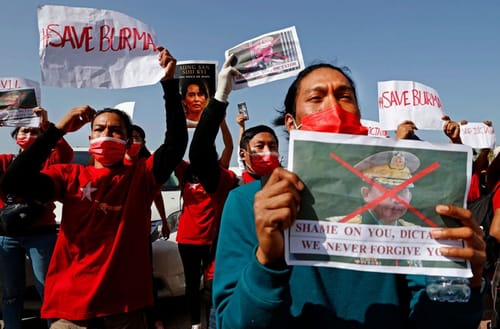 |
| Facebook lists Myanmar as a high-risk site |
After the coup began earlier this week, Facebook classified Myanmar as a temporary high-risk website. It suppressed all fiery calls and protected the outposts critical of the country's army.
Facebook's Asia Pacific director of policy, Rafael Frankel, summed up his reaction to the coup in a letter to employees.
Frankel promised to use various products that were used in elections in Myanmar and the United States in the past to ensure that the platform was not used to spread false information, incite violence, or coordinate harm.
A spokesperson for the platform said: We are closely following developments in Myanmar and are taking further steps to end the misinformation and content that may currently lead to further tensions.
He added, "This includes removing the false information that legitimized the results of the November elections, as well as hate speech and other false information."
Facebook said it is taking temporary measures to limit the distribution of content that praises or promotes violence after the election and automatically reduces content that might violate the rules, and the host decided to remove the rules.
Frankel reportedly said: Facebook is protecting activists and journalists' accounts as well as vital information about what is happening on the ground.
Facebook also tried to find pages that had been seized by the army. The Wall Street Journal writes that Facebook has banned military television networks from using the site. Frankel said he will work hard to put an end to misinformation and content that may lead to more information. Severe condition.
In 2018, after the United Nations issued a report condemning Facebook's slow reporting and ineffectiveness, Facebook canceled many of the military accounts that led to the genocide of the Rohingya Muslims in the country.
However, Facebook's censorship committee recently lifted the ban on the anti-Muslim stance in Myanmar, saying it missed the hate speech.
The initial high-risk resettlement rating is not new as the rating was introduced in Washington, D.C. on January 6 after supporters of former president (Donald Trump) tried to reverse the results of the US election.

Post a Comment